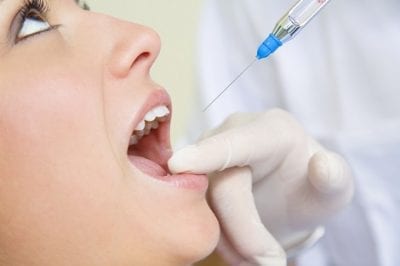Try to feel what’s left of your tooth with your tongue and sense if there’s something there that’s similar to a crater. If you feel it, you have to face three potential scenarios to rectify this situation. First, there might be enough remaining tooth to put in teeth filling there, like cementing a hole in the wall. On the other hand, if the crater is too big then the filling will just pop out time and time again. Another scenario is that you might need to put in a crown there by shaving off the teeth in the right size and covering it with the single-tooth denture. The last option to fix this if there’s barely any tooth left is that you’ll need to undergo dental surgery.
These are all quite expensive solutions. Even if you have dental insurance, it might not have full coverage or the partial coverage will still have you paying quite a lot of out-of-pocket fees. What are you supposed to do now?
What to Expect out of Dental Surgery Itself

Dental surgery is any number of dentistry procedures involving artificial dentition alteration. To be more specific, it is tooth surgery as well as jawbone surgery in order to improve your tooth appearance and functionality as well as your bite. They involve the following procedures that are also available in dental tourism hotspots like Thailand:
- Tooth Extraction: This is the most basic procedure most associated with dentists next to tooth filling. This involves removing a problematic, redundant, or diseased tooth by cutting or pulling it out. You can undergo this treatment under local (numbing and conscious) or general (sleeping) anesthesia. This commonplace treatment can range from removing milk teeth or broken teeth as well as impacted wisdom teeth (which can involve going under the knife to extract the tooth from under the gums).
- Orthodontic Treatment: A measure of dental surgery is also involved in this facet of dentistry that deals with the correction, prevention, diagnosis, and maintenance treatment of teeth and jaws that are crooked or malpositioned. The layman typically associates braces with orthodontic treatment of malocclusion, but there’s more to it than that.
- Braces and Retainers: Although most people associate dental surgery as involving knives or drilling holes into teeth, braces and other fixed-space maintainers as well as retainers and other removable orthodontic appliances help in gradually moving your teeth to become straighter and more aesthetically pleasing. Any dental procedure involving body part manipulation and instruments can be considered as dental surgery.
- Implant-Supported Prosthesis: The surgical procedure that combines dentures and implants together can also be considered an orthodontic one because it involves bones. This is especially true in the case of bone-grafting or gum-grafting for jaws that are too small or thin to support a regular implant.
- Apicoectomy: Though this is usually associated with endodontic surgery, it’s also an orthodontic treatment as well because part of the underlying bone requires removal through this procedure. This is as opposed to pulpectomy or pulpotomy that involves teeth pulp removal and has nothing to do with orthodontics.
- Fiberotomy: This orthodontic surgical procedure involves severing the gingival or gum fibers around the tooth to prevent it from relapsing. Fiberotomy is useful when it comes to orthodontics because it prevents tooth rotations corrected by dental braces or other orthodontic treatments from going back to its original crooked form before the orthodontic correction was applied.
- Endodontic Surgery: This surgery is any type of surgery that involves the tooth root or tooth pulp. It’s usually referred as a surgical root canal procedure that removes the tooth root in order to kill the significantly damaged tooth, put inert material inside it, and put a crown on it to save it. Otherwise, you might need to outright extract the tooth in question once the tooth root or nerve inflammation has died down.
- Pulpotomy: This involved opening the tooth’s pulp chamber in order to enable an infection to drain the fluids that cause swelling and pressure in the teeth. This is typically a precursor surgery before the actual root canal treatment.
- Pulpectomy: This time around, this involves the removal of the pulp itself from the pulp chamber. This is for the sake of temporary pain relief. This also serves as a precursor to the root canal surgery because it’s not advised for the dentist to remove the root before the pain and inflammation has gone down.
- Apicoectomy: This is the surgery that involves resection of the root-end of the tooth. Usually, the root canal alone is enough for relieving pain and at the end of the tooth, known as the apex, is removed by entering through the gums or gingiva in order to surgically extract the diseased material of your tooth.
- Prosthodontics: Dental surgery might also be involved when it comes to prosthodontics or putting on dental prosthetics on your damaged tooth or teeth to improve aesthetics and ensure better dental function overall. This typically involves altering the tooth itself in order to make fitting in a crown, veneer, or dentures.
- Crown or Caps: The dental crown is the most common dental prosthetic. It’s an artificial cap or covering for a broken tooth made from various biocompatible materials. It can be made of a tin or aluminum mixture, gold, or CMC/PMC, which is also known as a ceramic/porcelain metal composite. The tooth underneath must be drilled and reshaped in order to accommodate these restorations, especially if a tooth filling isn’t enough to do the job.
- Veneers: These prosthetics don’t cover the whole tooth but instead serve as coverings for the front or forward portion of the tooth like the buccal or labial parts that are visible when you smile. They’re aptly used for front teeth like incisors or canines instead of molars. They’re typically used for aesthetic purposes although they also present a measure of functional improvement for severely chipped teeth.
- Bridge: This fixed prosthetic teeth construction involves one or two crowns connected together on healthy or remaining teeth or through implants in order to fix a gap of one missing tooth or several missing teeth. It’s a more practical and affordable way to replace missing teeth because it covers more ground and doesn’t necessitate putting new implants on every last tooth socket left by extracted or fallen teeth.
- Implant: This involves surgically implanting a titanium implant right into the bone, whether it’s the maxilla or mandible, of your mouth in order to simulate how natural teeth are anchored to the bone. It takes about 4-6 months for a fresh implant area to heal. After healing, an artificial tooth or teeth such as a crown or bridge is placed on the implant by dental cement or by drilling a screw there.
- Dentures: Putting in false teeth isn’t usually a surgical procedure as much as placing a crown on a shaven tooth. However, this depends on how the partial or complete dentition set is attached to your mouth. They can be removable, which doesn’t involve surgery, or they can be placed to neighboring teeth like a bridge would. For elderly people who can’t take the impact of surgery, plastic or metal grasps on the palatal or gingival surface and adhesive are usually used to place them.
- Implant-Supported Prosthesis: Dental surgery involving a combination of implants and dentures is called this. This complex series of procedures typically include placing bases unto the bone, allowing them to heal before metal appliances are affixed to the surface of the gum. After that, dentures are placed atop and fixed into place with these dental implant anchors.
- Periodontics: Periodontics or periodontology is a dentistry specialty that studies supporting teeth structures as well as the treatment of diseases and conditions affecting these structures. The periodontium are the supporting tissues that help keep your teeth in place, such as the gums or gingiva, periodontal ligament, cementum, and alveolar bone. Periodontic surgery typically deals with treating these structures or tissues.
- Oral and Maxillofacial Surgery: As for OMS or OMFS, this dental surgery type involves the surgical treatment of many defects, injuries, and diseases of the jaws and hard or soft tissues of the oral and maxillofacial region as well as the face, neck, and head. This field of surgery is internationally recognized and typically involves fixing cranio-maxillofacial trauma, cleft surgery, and so forth.
Why Go to Thailand to Undergo Dental Surgery?

Thailand, simply put, is known for the dramatically low prices of its high-quality medical and dental services. This is what makes it a top destination for dental tourism. If you’ve never considered going there before for the sake of all your dental surgery needs, then here are a few reasons why you should consider it as a viable dental health option.
- Dental Insurance or Lack Thereof: Medical insurance, which includes dental insurance, remains quite the hot topic. Although you should get it if you can, dental insurance can be quite prohibitively expensive and has a lack of coverage in case you avail of the more affordable policies. However, not taking care of your dental needs can cause significantly costly and detrimental problems in the future. What should you do in such cases? Dental tourism is the answer for companies who keep on failing their employees by not giving them ample dental insurance.
- A Chance for Vacation: Speaking of which, you can go to Thailand to undergo dental surgery on a budget through the phenomenon known as dental tourism. Simply put, dental tourism combines low-priced yet international-grade dentistry services with the chance to vacation anywhere in the world, which in this case is Thailand. The Land of Smiles is a gorgeous country full of stunning islands and intriguing cities. You can go shop, swim, trek, camp, or tour the country before or directly after surgery as well as while you’re covering from it. You can go island-hopping or try out all sorts of topnotch Thai cuisine for good measure.
- Patient-Friendly Centers: Thailand’s dental tourism industry is booming not only because the country is in and of itself the Pearl of the Orient in terms of Southeast Asian tourism hotspots. The dental part of the equation is also superb. You get the most out of your investment when you combine dentistry with tourism in Thailand. Specifically, the nation is home to loads of patient-friendly centers that work overtime to provide a welcoming experience for its tourist patients. Some double as hotels or resorts while others make the dental surgery as hassle-free as possible with its English-speaking dentists and staff
- Quality Care and Safety: The quality of the dental services themselves isn’t cheap because they’re poor or low-grade. The dentists are trained abroad to ensure that high standards are observed when you’re undergoing dental surgery for cosmetic, endodontic, prosthodontic, orthodontic, periodontic, or oral and maxillofacial reasons. The cost of living in Thailand is lower than western countries, which explains its low prices. Furthermore, Thai healthcare is so high that it is now offering its services to foreigners in medical and dental tourism form. The Thai government even works closely with public health organizations to ensure that its medical and dental standards are up to snuff.
In Conclusion

You might need dental surgery if a tooth of yours has shattered into pieces after biting at steel, gradual grinding every night through bruxism, undergoing tooth decay, or eating particularly tough steaks and there’s nothing left of the part where the dentist is supposed to pull. As you spit out chunks of gray amalgam and shards of tooth as well as blood unto your porcelain sink, it might dawn to you that the dentist will have to cut a portion of your gums in order to dig in and grab hold of what’s left of your broken tooth.
So you need dental surgery. Perhaps you have an impacted wisdom tooth. Or maybe you’re attempting to deal with a root canal procedure. It’s also possible that you’re planning on putting in a dental implant, which also requires you to go under the knife and cut open your gums. What’s worse is that you might even need a bone graft or gum graft to allow the implant to have more room in your mouth, which means additional surgery. It’s also much cheaper to avail of Thai dentistry compared to paying for high insurance premiums on the off-chance that you need dental surgery domestically.
Thantakit International Dental Center is Thailand’s longest established dental center. Situated in Bangkok, our clinic is renowned across the world as a destination for world-class dentistry, with most of our patients flying to us from Australia.
Please contact us today and get a FREE dental consultation.











